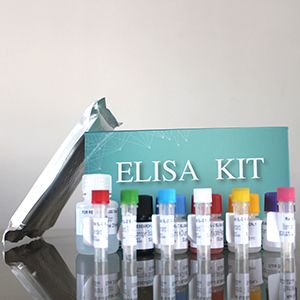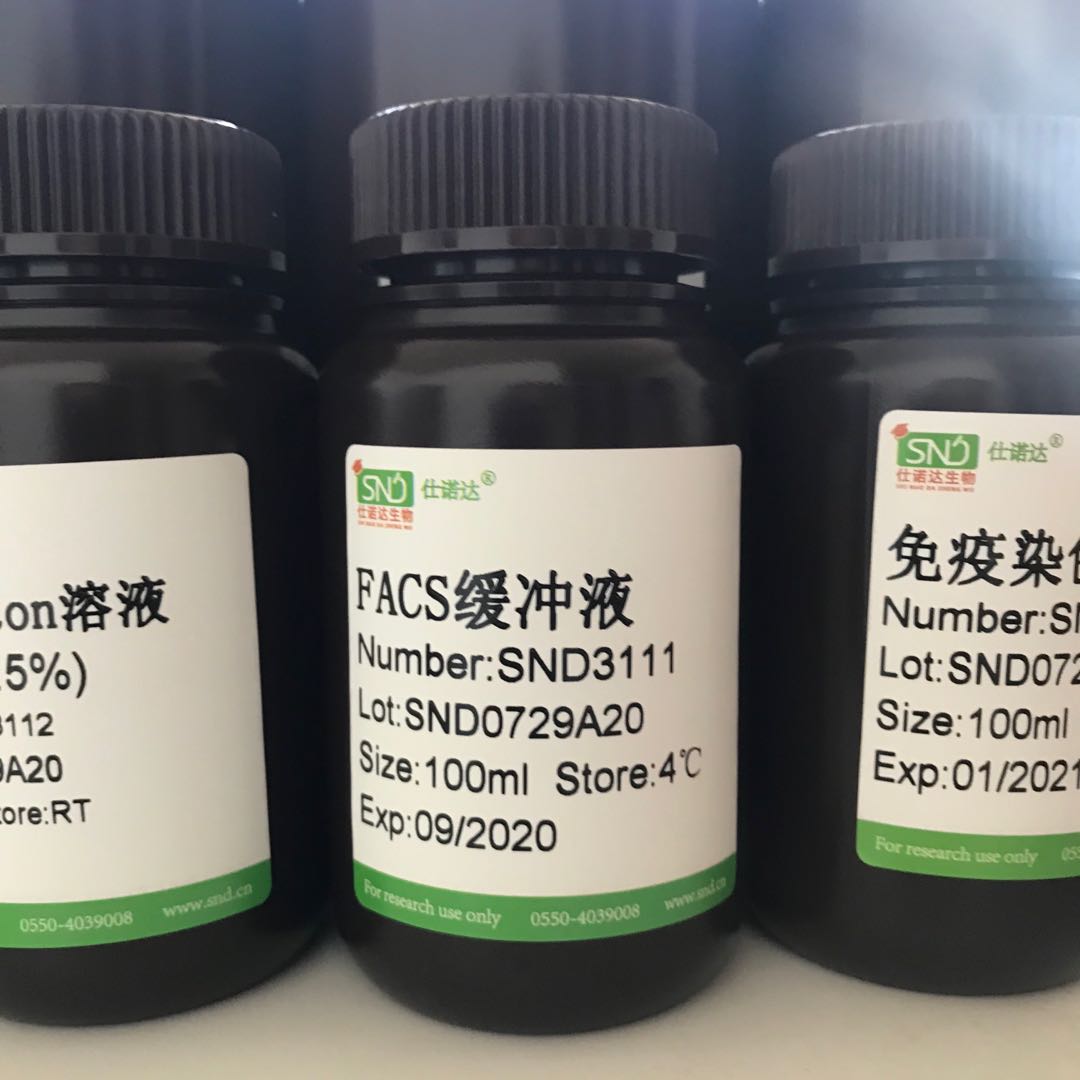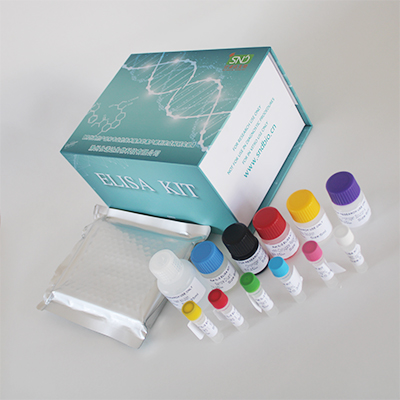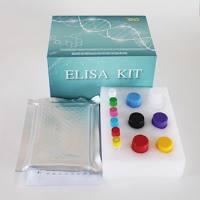
产品详情
文献和实验
相关推荐
供应商 :仕诺达生物
库存 :999
样本 :冻干粉,上清液等
标记物 :二氢乳清酸脱氢酶(DHODH)
适应物种 :微生物
应用 :高校,中科院,研发单位等
检测方法 :ELISA
检测限 :最低检测浓度小于5.0 ng/ml。
规格 :48T/96T
本试剂盒只能用于科学研究,不得用于医学诊断
微生物(Microorganism)二氢乳清酸脱氢酶(DHODH)ELISA检测试剂盒

使用说明书
检测原理
试剂盒采用双抗体一步夹心法酶联免疫吸附试验(ELISA)。往预先包被二氢乳清酸脱氢酶(DHODH)抗体的包被微孔中,依次加入标本、标准品、HRP标记的检测抗体,经过温育并彻底洗涤。用底物TMB显色,TMB在过氧化物酶的催化下转化成蓝色,并在酸的作用下转化成最终的黄色。颜色的深浅和样品中的二氢乳清酸脱氢酶(DHODH)呈正相关。用酶标仪在450nm 波长下测定吸光度(OD 值),计算样品含量。
样品收集、处理及保存方法
1. 样本不能含叠氮Na(NaN3),因为叠氮Na(NaN3)是辣根过氧化物酶(HRP)的抑制剂。
2. 标本采集后尽早进行提取,提取按相关文献进行。
3. 微生物萃取液或其它相关样本:请1000 x g离心20分钟,取上清即可检测。
4. 保存:如果样本收集后不及时检测,请按一次用量分装,冻存于-20℃,避免反复冻融,在室温下解冻并确保样品均匀地充分解冻。
自备物品
- 酶标仪(450nm)
- 高精度加样器及枪头:0.5-10uL、2-20uL、20-200uL、200-1000uL
- 37℃恒温箱
- 试剂盒保存在2-8℃,使用前室温平衡20分钟。从冰箱取出的浓缩洗涤液会有结晶,这属于正常现象,水浴加热使结晶完全溶解后再使用。
- 实验中不用的板条应立即放回自封袋中,密封(低温干燥)保存。
- 浓度为0的S0号标准品即可视为阴性对照或者空白;按照说明书操作时样本已经稀释5倍,最终结果乘以5才是样本实际浓度。
- 严格按照说明书中标明的时间、加液量及顺序进行温育操作。
- 所有液体组分使用前充分摇匀。


| 名称 | 96孔配置 | 48孔配置 | 备注 |
| 微孔酶标板 | 12孔×8条 | 12孔×4条 | 无 |
| 标准品 | 0.3mL*6管 | 0.3mL*6管 | 无 |
| 样本稀释液 | 6mL | 3mL | 无 |
| 检测抗体-HRP | 10mL | 5mL | 无 |
| 20×洗涤缓冲液 | 25mL | 15mL | 按说明书进行稀释 |
| 底物A | 6mL | 3mL | 无 |
| 底物B | 6mL | 3mL | 无 |
| 终止液 | 6mL | 3mL | 无 |
| 封板膜 | 2张 | 2张 | 无 |
| 说明书 | 1份 | 1份 | 无 |
| 自封袋 | 1个 | 1个 | 无 |
试剂的准备
20×洗涤缓冲液的稀释:蒸馏水按1:20稀释,即1份的20×洗涤缓冲液加19份的蒸馏水。
洗板方法
- 手工洗板:甩尽孔内液体,每孔加满洗涤液,静置1min后甩尽孔内液体,在吸水纸上拍干,如此洗板5次。
- 自动洗板机:每孔注入洗液350μL,浸泡1min,洗板5次。
- 从室温平衡20min后的铝箔袋中取出所需板条,剩余板条用自封袋密封放回4℃。
- 设置标准品孔和样本孔,标准品孔各加不同浓度的标准品50μL;
- 样本孔先加待测样本10μL,再加样本稀释液40μL;空白孔不加。
- 除空白孔外,标准品孔和样本孔中每孔加入辣根过氧化物酶(HRP)标记的检测抗体100μL,用封板膜封住反应孔,37℃水浴锅或恒温箱温育60min。
- 弃去液体,吸水纸上拍干,每孔加满洗涤液,静置1min,甩去洗涤液,吸水纸上拍干,如此重复洗板5次(也可用洗板机洗板)。
- 每孔加入底物A、B各50μL,37℃避光孵育15min。
- 每孔加入终止液50μL,15min内,在450nm波长处测定各孔的OD值。
绘制标准曲线:在Excel工作表中,以标准品浓度作横坐标,对应OD值作纵坐标,绘制出标准品线性回归曲线,按曲线方程计算各样本浓度值。
点击进入仕诺达官网查看更多产品信息
试剂盒性能
- 准确性:标准品线性回归与预期浓度相关系数R值,大于等于0.9900。
- 灵敏度:最低检测浓度小于5.0 ng/ml。
- 特异性:不与其它可溶性结构类似物交叉反应。
- 重复性:板内、板间变异系数均小于15%。
- 贮藏:2-8℃,避光防潮保存。
- 有效期:6个月
- 试剂盒仅供研究使用,不得用于临床实验或人体实验,否则所产生的一切后果,由实验者承担,本公司概不负责。
- 严格按照说明书操作,实验者违反说明书操作,后果由实验者承担。
■郑重申明:本公司销售所有产品均为实物拍摄,如产品出现质量问题,本公司包一切售后!!!
■500元以上包邮,本公司提供正规发票,货到付款,可按科研实验要求定制产品!!!
■本公司已与很多高校中科院及研发单位合作并也获得了老师的认可和推荐!!!
滁州仕诺达生物科技有限公司(Chuzhou shinuoda Biological Technology Co., Ltd.)是一家以技术开发、转让、销售及咨询服务为一体的生物科技有限公司,公司主要研发销售生物试剂,为全球科研客户提供优质的产品和技术服务。
公司主营产品包括:ELISA试剂盒、动物血制品、标准品、染色液、试剂、抑制剂、酶相关试剂以及仪器设备等 经销品牌:Thermo Fisher Scientific、CST、abcam、santa cruz、sigma、Corning、Axygen、NEB、Novus、BD、R&D、阿拉丁(未提及品牌,本公司也可以代买) 公司以“产品质量第一,服务至上”为企业宗旨,秉承友好共赢的合作理念,立志给科研界老师提供我们力所能及的帮助。如果您对我公司的产品及服务有兴趣,期待您给我们个机会在线留言或者来电咨询。
FOR RESEARCH USE ONLY.
NOT FOR USE IN DIAGNOSTIC PROCEDURES.
Microorganism (DHODH) ELISA Kit
instruction
instruction
Intended use
This DHODH ELISA kit is intended Laboratory for Research use only and is not for use in diagnostic or therapeutic procedures.The Stop Solution changes the color from blue to yellow and the intensity of the color is measured at 450 nm using a spectrophotometer. In order to measure the concentration of DHODH in the sample, this DHODH ELISA Kit includes a set of calibration standards. The calibration standards are assayed at the same time as the samples and allow the operator to produce a standard curve of Optical Density versus DHODH concentration. The concentration of DHODH in the samples is then determined by comparing the O.D. of the samples to the standard curve.
Sample collection and storages
Serum - Use a serum separator tube and allow samples to clot for 30 minutes before centrifugation for 10 minutes at approximately 3000×g. Remove serum and assay immediately or aliquot and store samples at -20℃ or -80℃.Avoid repeated freeze-thaw cycles
Plasma - Collect plasma using EDTA or heparin as an anticoagulant. Centrifuge samples for 30 minutes at 3000×g at 2-8℃ within 30 minutes of collection. Store samples at -20℃or -80℃. Avoid repeated freeze-thaw cycles.
Cell culture supernates and other biological fluids - Remove particulates by centrifugation and assay immediately or aliquot and store samples at -20℃or -80℃. Avoid repeated freeze-thaw cycles.
Note: The samples shoule be centrifugated dequately and no hemolysis or granule was allowed.
Materials required but not supplied
1. Standard microplate reader(450nm)
2. Precision pipettes and Disposable pipette tips.
3. 37 ℃ incubator
Precautions
1. Do not substitute reagents from one kit to another. Standard, conjugate and microplates are matched for optimal performance. Use only the reagents supplied by manufacturer.
2. Do not remove microplate from the storage bag until needed. Unused strips should be stored at 2-8°C in their pouch with the desiccant provided.
3. Mix all reagents before using.
Remove all kit reagents from refrigerator and allow them to reach room temperature ( 20-25°C)
Materials supplied
| Name | 96 determinations | 48 determinations |
| Microelisa stripplate | 12*8strips | 12*4strips |
| Standard | 0.3ml*6tubes | 0.3ml*6tubes |
| Sample Diluent | 6.0ml | 3.0ml |
| HRP-Conjugate reagent | 10.0ml | 5.0ml |
| 20X Wash solution | 25ml | 15ml |
| Chromogen Solution A | 6.0ml | 3.0ml |
| Chromogen Solution B | 6.0ml | 3.0ml |
| Stop Solution | 6.0ml | 3.0ml |
| Closure plate membrane | 2 | 2 |
| User manual | 1 | 1 |
| Sealed bags | 1 | 1 |
20×wash solution:Dilute with Distilled or deionized water 1:20.
Assay procedure
1. Prepare all reagents before starting assay procedure. It is recommended that all Standards and Samples be added in duplicate to the Microelisa Stripplate.
2. Add standard: Set Standard wells, testing sample wells. Add standard 50μl to standard well.
3. Add Sample: Add testing sample 10μl then add Sample Diluent 40μl to testing sample well; Blank well doesn’t add anyting.
4. Add 100μl of HRP-conjugate reagent to each well, cover with an adhesive strip and incubate for 60 minutes at 37°C.
5. Aspirate each well and wash, repeating the process four times for a total of five washes. Wash by filling each well with Wash Solution (400μl) using a squirt bottle, manifold dispenser or autowasher. Complete removal of liquid at each step is essential to good performance. After the last wash, remove any remaining Wash Solution by aspirating or decanting. Invert the plate and blot it against clean paper towels.
6. Add chromogen solution A 50μl and chromogen solution B 50μl to each well. Gently mix and incubate for 15 minutes at 37°C. Protect from light.
7. Add 50μl Stop Solution to each well. The color in the wells should change from blue to yellow. If the color in the wells is green or the color change does not
appear uniform, gently tap the plate to ensure thorough mixing.
8. Read the Optical Density (O.D.) at 450 nm using a microtiter plate reader within 15 minutes.
Calculation of results
- This standard curve is used to determine the amount in an unknown sample. The standard curve is generated by plotting the average O.D. (450 nm) obtained for each of the six standard concentrations on the vertical (Y) axis versus the corresponding concentration on the horizontal (X) axis.
- First, calculate the mean O.D. value for each standard and sample. All O.D. values, are subtracted by the mean value of the zero standard before result interpretation. Construct the standard curve using graph paper or statistical software.
- To determine the amount in each sample, first locate the O.D. value on the Y-axis and extend a horizontal line to the standard curve. At the point of intersection, draw a vertical line to the X-axis and read the corresponding concentration.
- Any variation in operator, pipetting and washing technique, incubation time or temperature, and kit age can cause variation in result. Each user should obtain their own standard curve.
- The sensitivity by this assay is 1.0 IU/L
- Standard curve
Storage: 2-8℃.
validity: six months.
FOR RESEARCH USE ONLY;
NOT FOR THERAPEUTIC OR DIAGNOSTIC APPLICATIONS!
PLEASE READ THROUGH ENTIRE PROCEDURE BEFORE BEGINNING!
NOT FOR THERAPEUTIC OR DIAGNOSTIC APPLICATIONS!
PLEASE READ THROUGH ENTIRE PROCEDURE BEFORE BEGINNING!

滁州仕诺达生物科技有限公司
实名认证
金牌会员
入驻年限:5年











